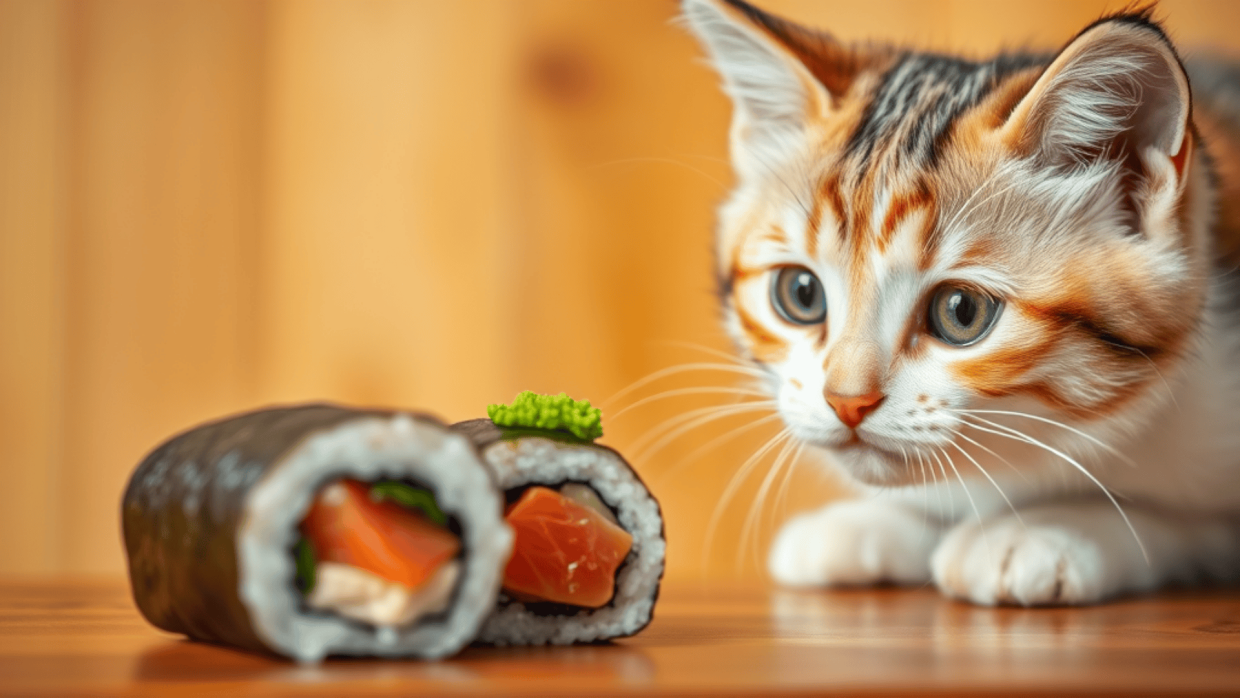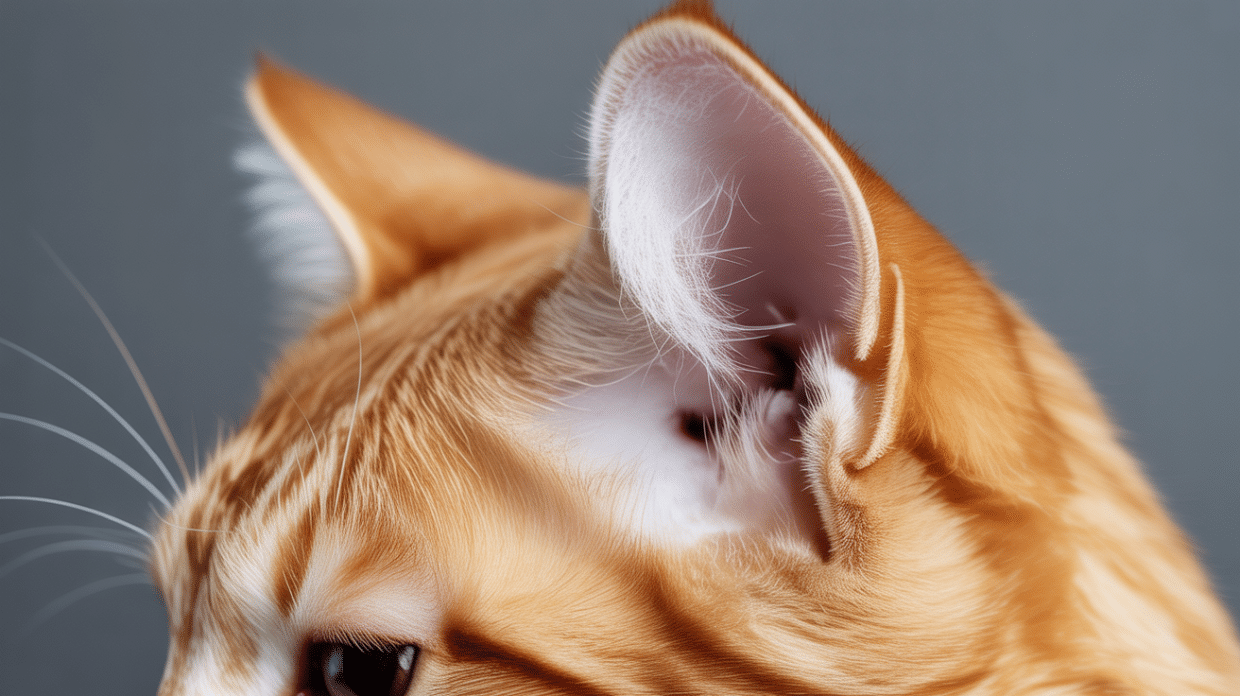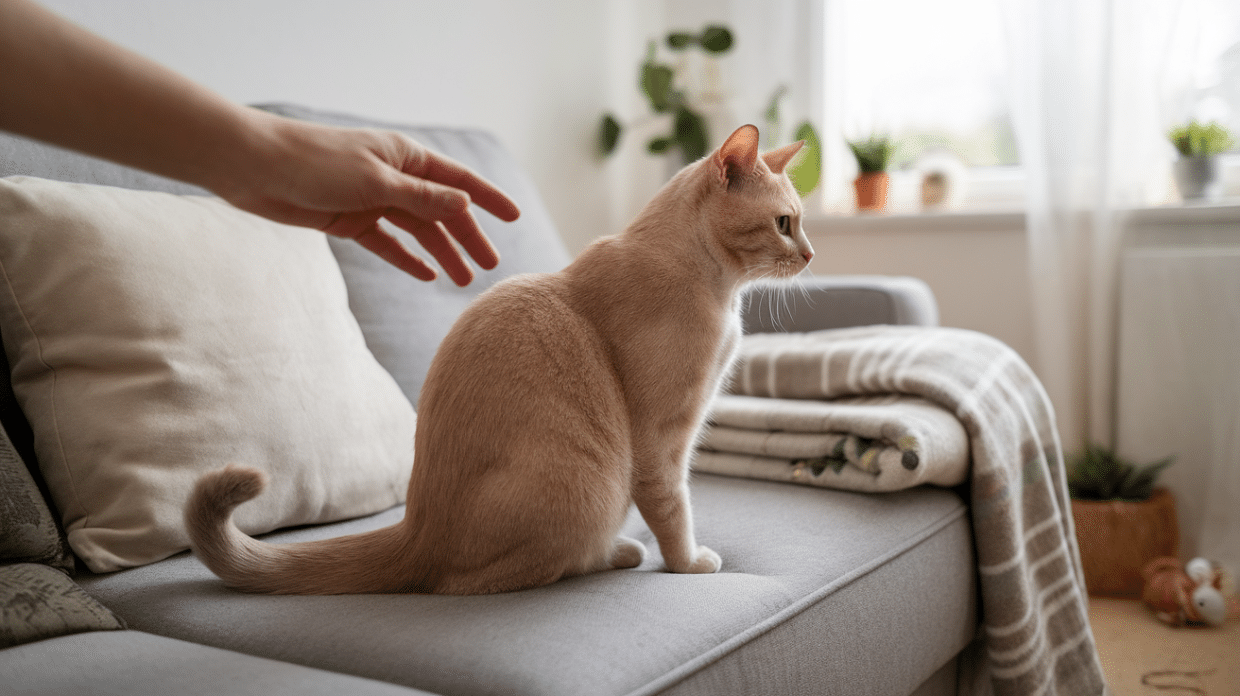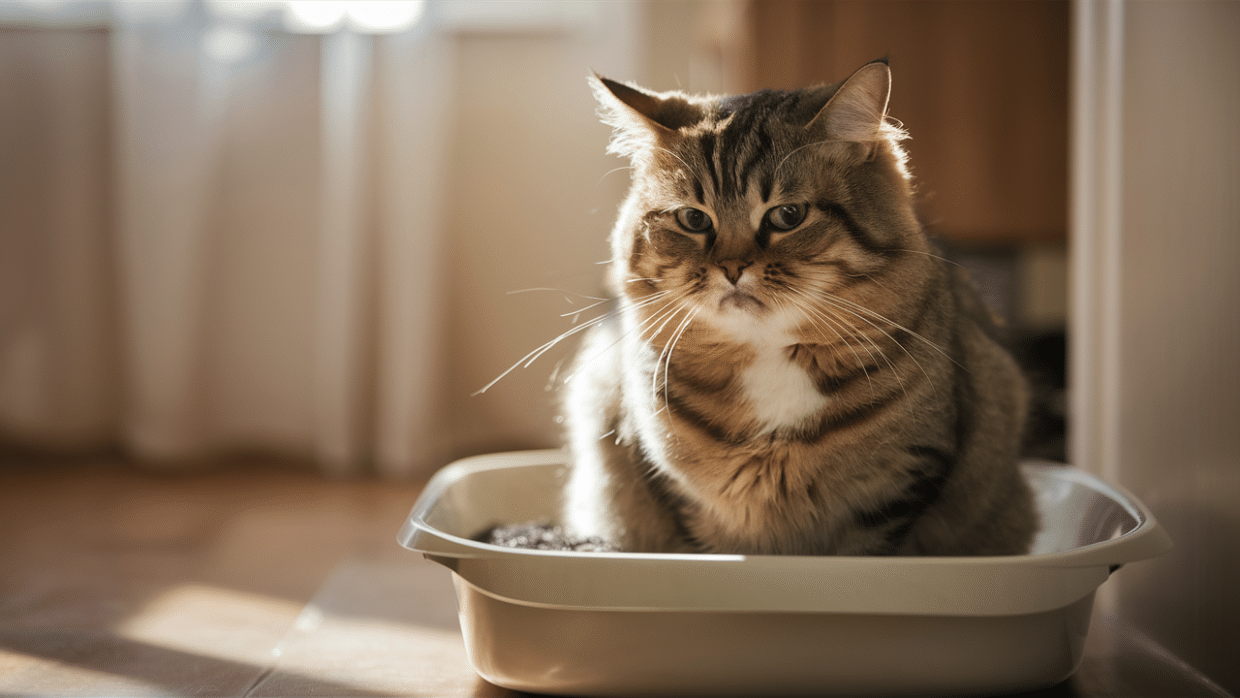Many people think that cats can eat sushi because they love fish.
However, just because cats are drawn to fish doesn’t mean it’s always safe for them to eat, especially when it comes to sushi.
Feeding sushi to your cat can carry some health risks, so it’s important to know the facts before sharing your meal.
Cats have different dietary needs than humans. What’s safe and healthy for us might not be good for our feline friends.
While fish might seem like a tasty treat for them, certain ingredients in sushi can actually cause harm.
Let us see why consuming sushi can be bad for your cat!
Can Cats Eat Sushi?
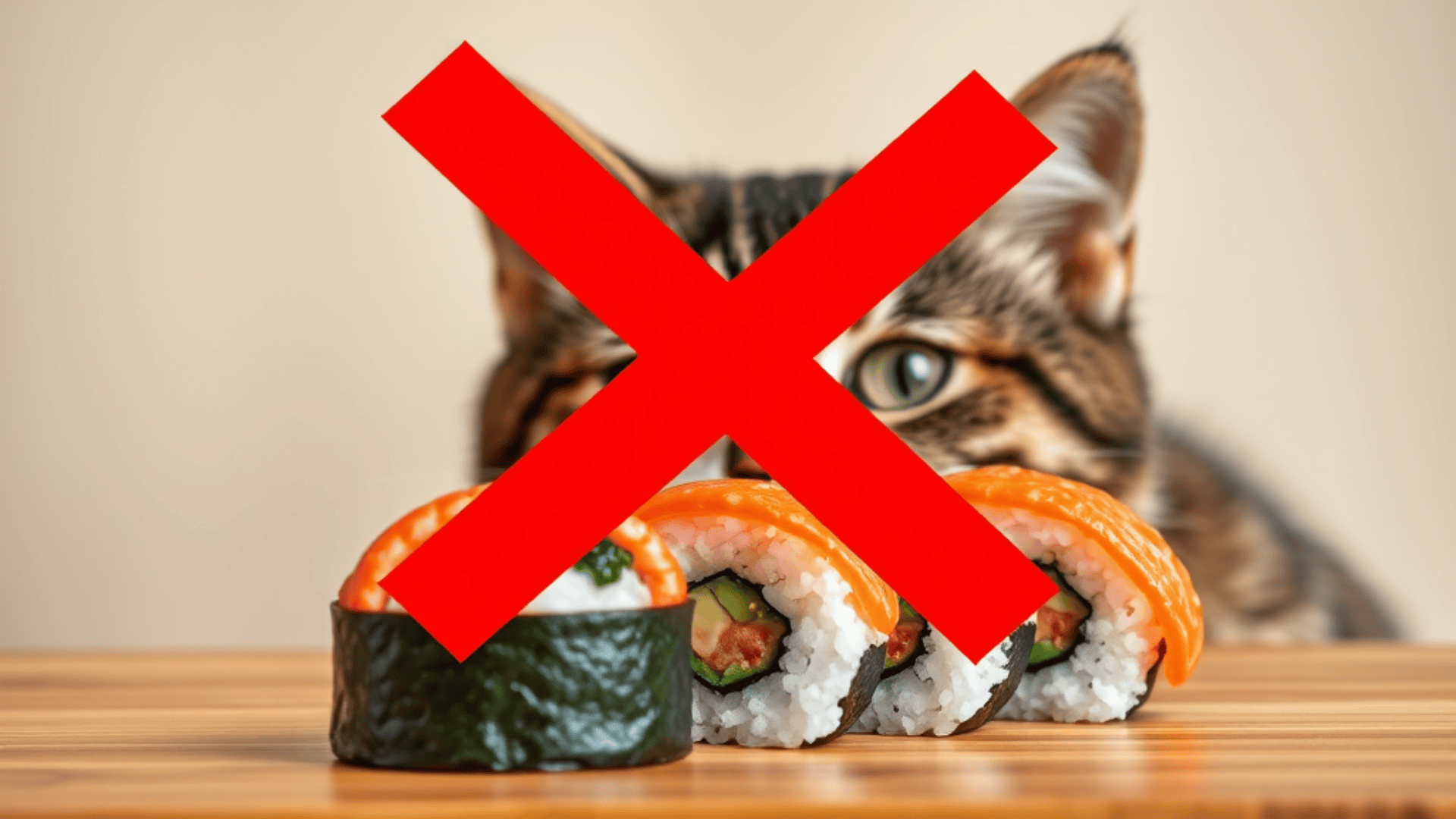
Sushi is not recommended for cats.
The raw fish and other ingredients like rice, soy sauce, and wasabi can pose health risks and are unsuitable for your cat’s diet.
It’s better to avoid sharing sushi with them. Here’s why:
- Raw Fish: Contains the same risks as raw fish, including harmful parasites and the enzyme thiaminase.
- Rice: Not toxic but offers little nutritional value for cats.
- Seaweed: Safe in small amounts but can contain harmful additives like salt or seasonings found in sushi.
- Soy Sauce: High sodium levels can lead to salt poisoning in cats.
- Wasabi and Pickled Ginger: Can upset a cat’s stomach and may contain sugar or vinegar, which are harmful to cats.
Why Cats Love Fish
Cats are naturally attracted to fish because it is rich in protein and fat, which are nutrients they need.
The strong smell of fish often catches their attention, and they may be eager to eat it.
However, fish is not a natural part of a wild cat’s diet, and they typically don’t hunt fish as a regular food source.
While fish can be a tasty treat for cats, it should only be given occasionally.
It shouldn’t replace their main meals, which should be nutritionally balanced and specially made for their needs.
To stay healthy, cats need a variety of nutrients, which come from well-balanced cat food.
Can Cats Eat Raw Fish?
Raw fish can contain harmful parasites, like Anisakis, that can cause serious health problems for cats.
It also has an enzyme called thiaminase, which breaks down thiamine (Vitamin B1) in their bodies.
A lack of thiamine can lead to serious issues, such as seizures or confusion.
Eating raw fish can also increase the risk of food poisoning from bacteria like E. coli or salmonella.
These bacteria can cause stomach issues and other health problems.
Raw fish is unsafe for cats because it can contain parasites and bacteria. It’s best to avoid giving it to them.
Understanding Cats’ Digestive System and Fish Consumption
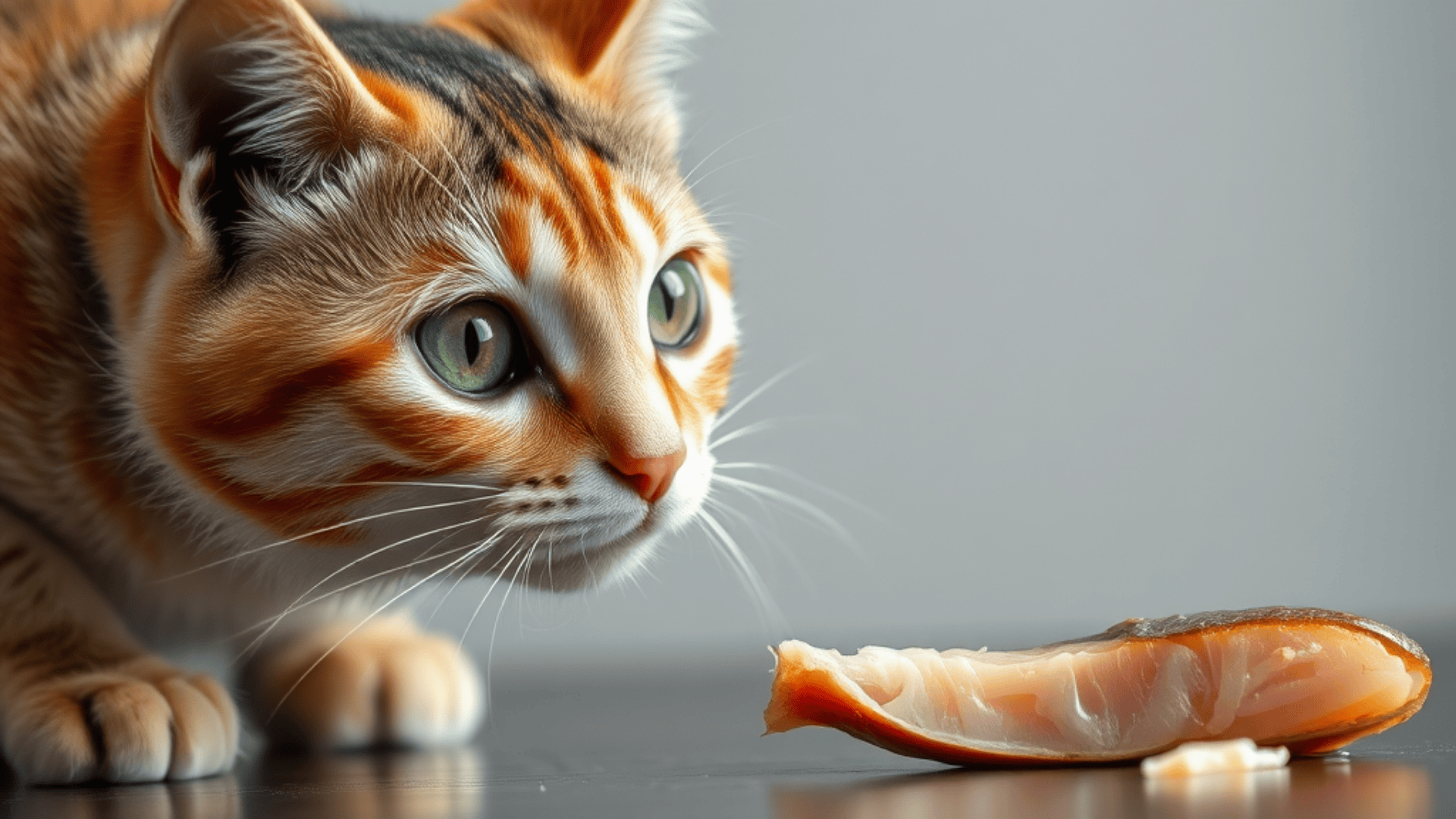
Cats are obligate carnivores, which means they need animal-based proteins to stay healthy.
They can digest some animal proteins well, but raw fish can be difficult to process.
Their digestive systems are not designed to handle certain enzymes or bacteria in raw fish.
For example, raw fish contains thiaminase, which breaks down an important vitamin called thiamine (Vitamin B1), and cats may struggle with this.
Additionally, a raw diet may not always be beneficial for domesticated cats.
While wild cats may sometimes eat raw food, domesticated cats have different nutritional needs and digestive abilities.
Feeding them a balanced, cooked diet is better for their health.
Safer Alternatives to Sushi for Cats
You can steam or bake fish like salmon or tuna without seasonings or bones. This is a much safer and healthier option for your cat than sushi.
Many pet stores offer freeze-dried fish treats that are safe for cats. These treats are designed specifically for cats and can be fun to share fish with them without risks.
If you want to mimic sushi for your cat, you can roll small pieces of cooked fish in unsalted seaweed or serve it plain.
This way, you can give your cat a fun, fishy treat without the harmful ingredients in regular sushi.
What to Do if Your Cat Eats Sushi by Accident
- Assess Ingredients: Check the sushi for harmful ingredients like raw fish, soy sauce, or seasoning. This will help you understand the potential risks.
- Monitor Symptoms: Monitor your cat for signs of food poisoning or digestive issues, such as vomiting, diarrhea, lethargy, or loss of appetite. If you notice any of these symptoms, contact a veterinarian right away.
- Prevent Future Incidents: To prevent future accidents, keep sushi and other harmful human foods out of the reach of curious cats. Consider using lids, storage containers or keeping food out of areas your cat can access.
Common Symptoms of Food Poisoning in Cats
- Vomiting: If your cat vomits after eating something harmful, it’s a clear sign of digestive upset. Monitor how often it happens and check for any other symptoms.
- Diarrhea: Another common sign of food poisoning. It can cause dehydration, so watch how frequently your cat has diarrhea and how it behaves.
- Lethargy: If your cat seems unusually tired, weak, or disinterested in activities they usually enjoy, it could indicate that something isn’t right.
- Unusual Behavior: Watch for changes in your cat’s behavior, such as hiding, pacing, or excessive drooling. These can signal discomfort or illness.
A Balanced Treat Approach
Treats should make up no more than 10% of your cat’s daily caloric intake. Too many treats can upset the balance of their diet and lead to health issues like obesity.
Always ensure that treats suit cats and contribute to their overall nutrition. Avoid giving them human food as a regular treat, as it may not provide the essential nutrients they need.
Cats need a balanced, complete diet to stay healthy. Their main meals should be formulated specifically for them, and treats should be occasional and in small amounts to avoid compromising their health.
Human food should never replace their main meals.
The Final Verdict on Cats Eating Sushi
While cats can technically consume some sushi components, the risks outweigh the benefits.
Raw fish and other ingredients can be harmful to your cat’s health.
Sushi is unsuitable for cats because it contains raw fish and harmful ingredients like soy sauce and seasonings.
These ingredients can cause digestive issues, food poisoning, or other health problems.
Safer alternatives include offering cooked fish, which can be a healthy treat for cats, or choosing cat-specific fish treats for their dietary needs. These options are much safer and healthier for your feline friend.
Nutritional Breakdown of Fish for Cats
Salmon
Salmon is a great source of protein, omega-3 fatty acids, and vitamins like B12 and B6. These nutrients help with immune function, metabolism, and skin health.
Omega-3 fatty acids are especially helpful for cats with arthritis or skin issues. However, cooking salmon is important to avoid harmful bacteria or parasites.
Tuna
Tuna is high in protein and low in fat, making it a lean option for cats. It also contains omega-3 fatty acids.
However, feeding too much tuna can lead to mercury poisoning and other health problems. It’s best to offer tuna as an occasional treat rather than a regular part of your cat’s diet.
Whitefish
Whitefish, such as cod or haddock, is another good source of protein and omega-3s. It’s low in fat, making it a great option for cats on a weight management plan.
Whitefish also provides essential vitamins and minerals but should be given in moderation to avoid an unbalanced diet.
Risks of Sushi for Cats: Beyond Raw Fish
Rice
While rice isn’t toxic to cats, it provides no nutritional value for them. It’s a filler that doesn’t offer the essential vitamins or minerals cats need for a balanced diet.
Feeding your cat rice regularly can prevent them from getting the nutrients they require from their meals.
Soy Sauce
Soy sauce is high in sodium, and consuming too much can lead to salt poisoning.
Symptoms of salt poisoning include vomiting, diarrhea, and lethargy, which can be dangerous for cats if not treated.
Long-term exposure to high sodium can lead to kidney problems and other health issues.
Wasabi
Wasabi can upset your cat’s stomach and cause digestive issues.
Its strong, spicy nature is too intense for cats and can lead to discomfort or even more serious gastrointestinal problems.
Other Spices and Additives
Many sushi rolls contain vinegar, sugar, and other seasonings.
If consumed in large amounts, these ingredients can be harmful to cats, causing stomach upset or long-term issues like obesity or diabetes.
How to Safely Introduce Fish to Your Cat’s Diet
- Choose the Right Fish: Stick to fish like salmon, tuna (occasionally), or whitefish. These types of fish are safe and beneficial for cats. Avoid fish with high levels of mercury or toxins, such as shark or swordfish.
- Cook it Well: Always cook fish before offering it to your cat. Baking or steaming fish is the best option. Avoid frying or using any oil or butter.
- Remove Bones: Fish bones can be a choking hazard, so remove them completely before feeding your cat.
- No Seasoning: Don’t add any salt, spices, or sauces to the fish. These can be harmful to your cat.
- Portion Size: Offer fish in small amounts. A small portion of fish should not exceed 10% of your cat’s daily food intake. Too much fish can cause nutritional imbalances.
- Frequency: Fish should be an occasional treat, not a regular part of your cat’s diet. Offer it once a week or less, depending on your cat’s health and dietary needs.
Disclaimer
This blog provides educational content and is not a substitute for professional veterinary advice.
Always consult a veterinarian before making any dietary changes or seeking medical treatment for your cat.
Each cat’s health needs are unique, and your veterinarian can offer the best guidance for your pet’s situation.
Conclusion
Cats may be drawn to sushi because of the fish, but it is not a safe or healthy option.
Raw fish, soy sauce, rice, and other sushi ingredients can cause digestive issues, poisoning, and long-term health problems.
Instead, opt for safer alternatives like cooked fish or cat-specific fish treats.
Treats should only be a small part of your cat’s diet, and you should always consult your vet before making dietary changes.
You can keep your cat healthy and happy by understanding the risks and following safe feeding practices.
Check out other similar content on our website for more helpful tips on pet care and safe feeding practices.

